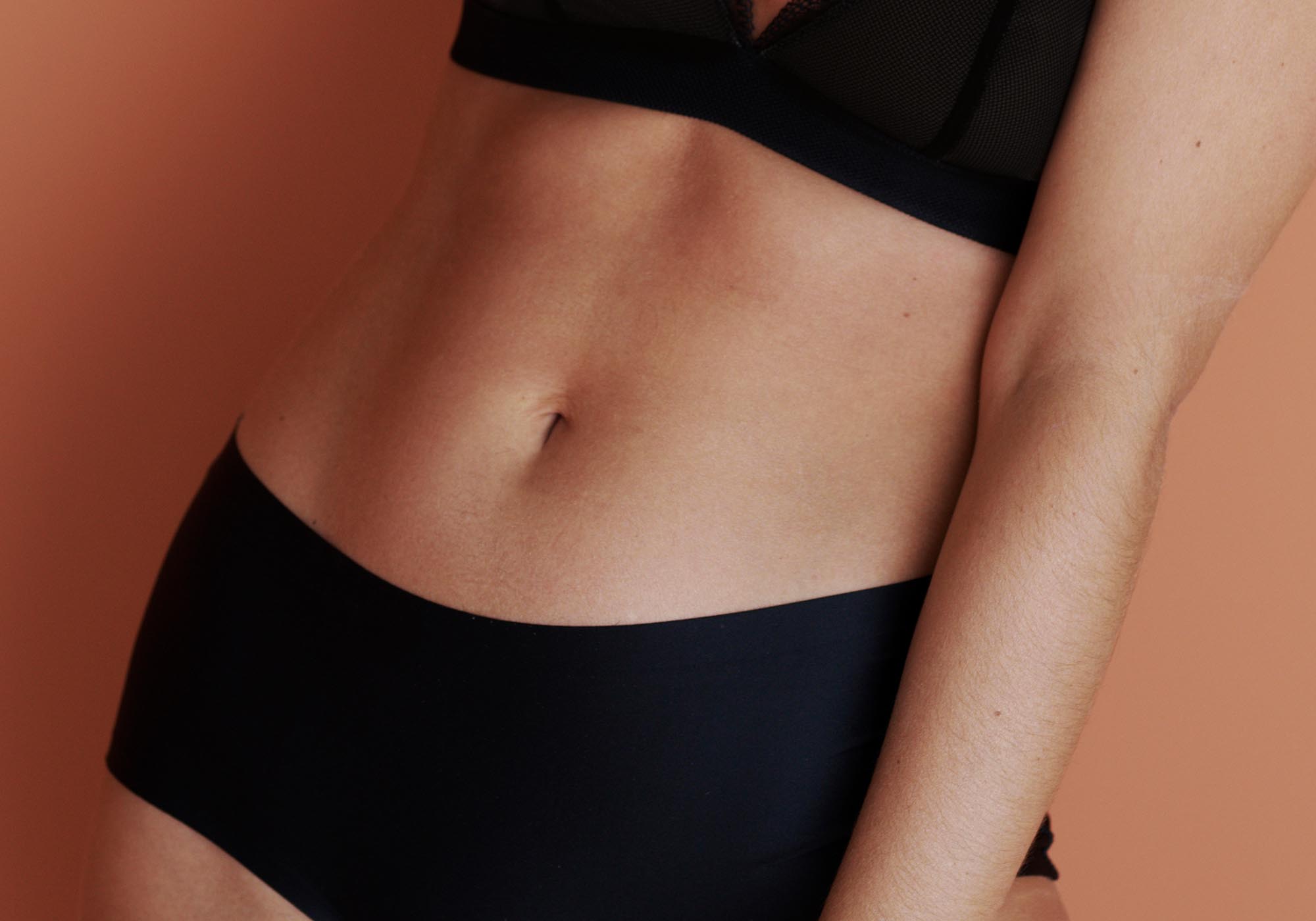Most people probably don’t pay much attention to the appearance of their belly button, aside from categorizing it as an innie or an outie. But for those who have undergone tummy tucks, hernia repair, and other similar abdominal surgeries that affect the belly button—or sometimes render it obsolete all together—this can be an area of serious focus. And just as areola tattoos offer an incredibly effective and realistic option for patients undergoing breast reconstruction after a mastectomy, so too do tattooed belly buttons make a great solution for those who feel self-conscious about the look of their stomach. Here’s what you need to know about this new type of restorative tattooing.
Several things can affect the appearance of the belly button
“The surgeries that are most likely to affect the look of the belly button are those where the incision is made in this area, such as hernia repair, exploratory laparotomies [general surgery where the abdomen is opened to examine the organs in the area], and even some emergency C-sections,” explains Dr. Ruth Celestin, a board-certified plastic surgeon in Riverdale, Georgia. “Abdominoplasty can also affect the look of the belly button. Oftentimes, it ends up looking ‘stuck on,’ which many people dislike because they feel it’s a dead giveaway that they’ve had surgery,” she says. There are also certain congenital defects that can cause people to have no belly button at all or cause it to heal in a way that drastically alters the appearance, she says.
That being said, the reconstruction or reparative options are somewhat limited. A surgical reconstruction is an option, as is a scar revision or steroid injections, to help flatten thickened scars that are causing a distorted appearance, says Dr. Celestin.
Belly button tattoos are gaining popularity as a restorative solution
“While belly buttons aren’t quite as popular as areolas just yet, I’ve had more and more people reaching out to me about getting this type of tattoo as of late,” says Shaughnessy Otsuji, a tattoo artist at Studio Sashiko in Langley, British Columbia. Otsuji’s first belly button client, Nicci Fisher, a 53-year-old mom of three, asked for a reconstructive belly button tattoo after having an umbilical hernia procedure and a tummy tuck. “The doctor essentially cut off my belly button,” says Fisher. “Shaugnessy was microblading my brows and I knew she did restorative areola tattoos, so I decided to ask her about doing my belly button—and she said yes.”
The tattooing process is complex but quick
Unlike an areola, belly buttons are three-dimensional, so it’s a matter of using both shadows and highlights to draw the eye and attention away from the fact that the skin is completely flat and there’s no dimple, explains Otsuji. She adds that among her clients, it’s about a fifty-fifty split between those who want their tattooed belly button to look exactly like the natural one they used to have and those who want something entirely new (for example, a small innie when they used to have a prominent outie).
Regardless, the tattoo itself doesn’t take very long. “It generally takes about an hour and half compared to areolas, which can take up to two and a half hours,” explains Otsuji. It also tends to not be especially painful, given the loss of sensation in the scar tissue in the area. To that point, the process also requires a very gentle hand and tattooing technique. “The scar tissue has a different texture from normal skin. It’s damaged, so you don’t want to overwork the area. That’s why I like to do an initial session and then go back in and do a touch-up a few months later, if necessary,” says Otsuji. The tattoo artist notes that clients should plan on spending at least $300, on average.
Belly button tattoos can be life-changing
“I lived without a belly button for more than 10 years. I’d walk along the beach in a bikini, and people would do a double-take when they saw my stomach. Now I put on a bikini and look in the mirror, and I feel normal and good knowing that I finally have something on my body that’s supposed to be there,” says Fisher. “People look at it from the front, and they can’t believe that it’s not real. The only time I even really realize that it’s a tattoo is when I look down at it and remember that it’s flat.” And in other good news, the normal aging process and minor weight fluctuations generally won’t produce any noticeable changes to your tattoo, points out Otsuji (though more extreme or rapid weight loss can alter the original placement a bit). Simply moisturizing the skin around the tattoo, as you would anywhere else on the body, is all you need to do to help preserve the appearance of your new belly button, she says.











